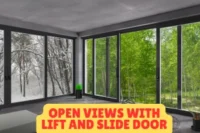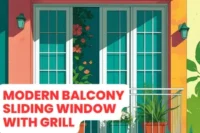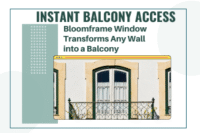Why uPVC Windows Are a Safer Option
Published: 13 Jun 25
When it comes to your home, safety isn’t something you want to guess about. So, are uPVC windows safe? Yes, and there’s a good reason why many homeowners trust them. These windows are strong, secure, and made to last. With multi-point locking systems and tough frames, uPVC windows offer real protection against intruders and harsh weather. They don’t just look good—they keep your family safe. If you’re thinking about upgrading your windows, uPVC is a smart, professional choice you can count on.
Why Safety Matters in Window Choice
Windows do much more than just bring in light or fresh air, they also act as key access points to your home. That’s why safety should be a top priority when choosing windows. Weak or poorly designed windows can become easy targets for break-ins, especially on ground floors. They can also pose risks during bad weather or accidents inside the home, like a window slamming shut near a child. When homeowners think about window safety, they usually look for a few key things: strong frames that won’t bend or crack, secure locking systems to keep unwanted guests out, fire-resistant materials that don’t spread flames quickly, and features that are safe for children and elders—like smooth corners and safety restrictors. Picking the right window can protect your home in more ways than you think.
Are uPVC Windows Safe?
Yes, uPVC windows are safe, and that’s exactly why they’re used in millions of homes and buildings around the world. Many families choose uPVC because it offers more than just good looks. These windows have a rigid structure that makes them tough to break, along with fire blocking properties that help slow the spread of flames in case of an emergency. They’re built to last, which means they will not warp, crack, or weaken over time like some other materials. Even in rough weather, uPVC windows stay strong. Unlike wooden frames that rot or metal frames that rust, uPVC stands firm without needing much maintenance. Plus, they have smooth edges and no sharp corners, making them safer for children and older adults. Whether it’s sunny, rainy, or stormy outside, uPVC windows help keep your home safe, secure, and worry-free.
How uPVC Compares to Other Window Materials
When choosing windows, many people compare uPVC with wood or aluminum. Let’s look at how uPVC stands out when it comes to safety, maintenance, and long-term performance.
No Rot or Termites : Wooden windows can rot over time and attract pests like termites. uPVC doesn’t face these issues, making it a safer and cleaner option for your home.
Low Heat Transfer : Aluminum windows are strong, but they heat up fast in the sun. This can raise indoor temperatures. uPVC keeps your rooms cooler because it doesn’t absorb heat easily.
Rust-Free Frames : Without special coating, aluminum can corrode in humid weather. uPVC resists rust and moisture, making it a better choice in coastal or rainy areas.
Child-Safe Design : uPVC windows often come with smooth edges and lockable handles. These features help prevent injuries and make them a safer option for homes with kids.
Built-in Features That Make uPVC Safe
uPVC windows are not just durable, they also come with smart features designed to protect your home and loved ones.
Secure Locking System : Many uPVC windows have multi-point locking systems. These locks secure the window at several points, making them much harder to break into than simple latch locks.
Strong Glass Options : uPVC frames can hold toughened or laminated glass, which is harder to shatter. This adds extra protection from accidents, break-ins, or rough weather.
Fire-Resistant Build : The material used in uPVC doesn’t catch fire easily. It also helps slow down flames, giving you and your family more time in case of emergencies.
Safe for Children : Features like window restrictors and smooth corners help prevent kids from opening windows too wide or getting hurt around sharp edges.
Want to Know What uPVC Really Is?
Before we talk more about safety, it helps to understand what uPVC actually means. uPVC stands for unplasticized polyvinyl chloride, a strong and rigid form of plastic that doesn’t bend or break easily. It’s used in windows because it doesn’t rust, rot, or catch fire easily, making it a reliable and safe material for your home. Unlike regular plastic, uPVC is made to last for years with very little maintenance.
Myths About uPVC Window Safety
Many people still believe some outdated ideas about uPVC windows. Let’s clear up a few common myths and explain why uPVC is actually a safe and smart choice for your home.
Not Just Plastic : Some think uPVC is just regular plastic, but it’s much stronger. uPVC is unplasticized, which means it doesn’t bend, crack, or wear out easily like normal plastic.
Won’t Just Melt : People worry that uPVC will melt in heat, but that’s not true. uPVC passes fire safety tests and can handle high temperatures without catching or spreading fire.
More Than Style : uPVC windows do look modern and neat, but they are not just for show. They include strong frames, tight seals, and safety features that protect your home.
Very Secure : With multi-point locking systems and sturdy builds, uPVC windows are hard to break into. They’re designed to keep your home safe from both intruders and accidents.
Conclusion
uPVC windows are more than just a modern trend, they are a safe, strong, and smart choice for any home. From fire resistance and weather durability to child-safe features and secure locking systems, they are built with your safety in mind. You don’t have to worry about rust, rot, or constant services. Just peace of mind, year after year.
FAQs
uPVC is a fire-retardant material. It doesn’t catch fire quickly and won’t spread flames like wood. That makes it a safer choice for homes.
Yes, they are built to handle harsh weather. The frames are sealed tightly and don’t swell or leak. You stay dry and safe even in heavy rain.
Yes, when fitted with double-glazing, uPVC windows reduce outside noise. That adds comfort and peace indoors. It’s another safety feature for your mental well-being.





